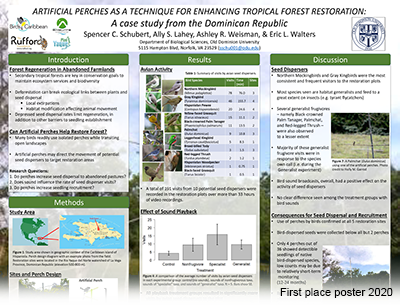ORCID
0000-0003-3171-9141 (Cavallario), 0000-0002-6754-7938 (Van Lunen)
College
College of Health Sciences
Program
Ph.D. Health Services Research
Publication Date
Spring 2020
DOI
10.25883/z9p3-3q79
Abstract
Context: Professional athletic training programs are now required to include at least one immersive clinical experience (ICE), which allow students to see more patient-care opportunities and job responsibilities that athletic trainers complete than those at a non-immersive clinical experience (N-ICE). Therefore, the purpose of this study was to compare the characteristics of patient encounters (PEs) that occurred at ICEs and N-ICEs.
Methods: This study used a multi-site panel design in which 336 athletic training students from 12 professional, CAATE-accredited programs (5 undergraduate, 7 graduate) logged PEs for one academic year (2018-2019). PEs were documented in E*Value (MedHub, Minneapolis, MN), and descriptive statistics were used to summarize the characteristic of each PE. Chi-Square tests were used to compare the percentages of student role during PEs in ICEs and N-ICEs (p<0.05).
Results: A total of 10,999 PEs occurred at ICEs and 18,228 PEs occurred at N-ICEs. Immersive experiences mostly occurred at collegiate settings (64%) followed by secondary school settings (29.8%); similar frequencies were found with N-ICEs (collegiate=67.2%, secondary school=24.4%). At ICEs, students performed 70.6% of reported PEs, assisted with 17.2%, and observed 12.2%. At N-ICEs, students performed 72% of reported PEs, assisted with 16.3%, and observed 11.7%. Participants averaged 0.80 diagnoses and 1.35 procedures per PE during ICEs, compared to 0.82 diagnoses and 1.33 procedures per PE during N-ICEs. Chi-square analyses revealed that there were no significant differences in the percentages of observed (χ2(1) = .00, p=1.00), assisted (χ 2(1)=.03, p=.862), or performed (χ 2(1)=.007, p=.933) PEs between ICEs and N-ICEs.
Conclusions: Student role during PEs, clinical site type, and PE length similarly occurred at both ICEs and N-ICEs. Programs may intend to use ICEs later in their curriculum to demonstrate progressive clinical autonomy, but there were no statistically significant differences in student role during ICEs or N-ICEs in this study.
Keywords
Athletic training students, Patient encounters, Non-immersive, Athletic Training Clinical Network
Disciplines
Sports Sciences
Files
Download Full Text (628 KB)
Recommended Citation
Jones, Bailey; Cavallario, Julie M.; Bacon, Cailee-Welch; Walker, Stacey; and Van Lunen, Bonnie, "Athletic Training Student Patient Encounter Characteristics during Immersive and Non-Immersive Experiences: A Report From the Athletic Training Clinical Network" (2020). College of Health Sciences Posters. 6.
https://digitalcommons.odu.edu/gradposters2020_healthsciences/6



